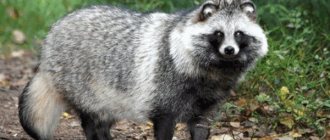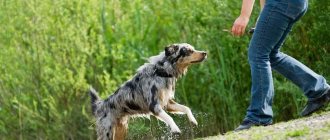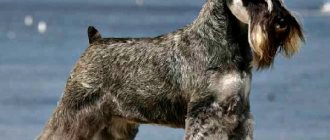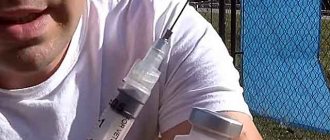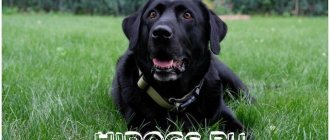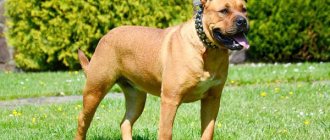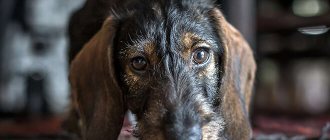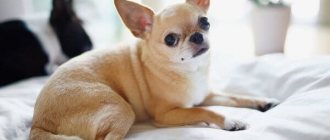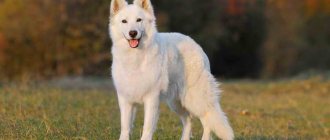Skin and coat care
In order for an animal to attract attention with a clean, shiny coat, you will have to work on its appearance regularly. Some dogs' coats tend to get dirty quickly and require frequent washing. For others, occasional brushing will be enough to look decent. Let's look at the requirements for caring for dogs of different breeds:
- Non-shedding and low-shedding dogs. Yes, yes, there are such people. Of course, their fur falls out, but continues to stick together with the rest until it is combed or plucked. They are ideal guests in the apartment.
These wonderful breeds include most terriers and some others:
- West Highland White Terrier;
- Yorkshire Terrier;
- Kerry Blue Terrier;
- Boston Terrier;
- Chinese Crested Dog;
- bichon frize;
- poodle;
- Maltese.
Terriers are required to be trimmed twice a year (plucking out dead hairs), and the rest need regular visits to the groomer for a haircut. At home, such dogs need brushing 2-3 times a week. Owners of hairless dogs need to be prepared for the fact that their skin secretes a peculiar secretion and needs regular cleansing. Caring for a low-shedding dog is just as important as caring for a fluffy poodle.
- Long-haired dogs, due to the specific nature of their coat, require maximum attention. If you don’t go through your thick hair with a special dog comb every 2 days, the hair will form tangles that will have to be cut out.
These breeds include:
- spaniels;
- collie;
- Afghan hounds;
- Shih Tzu.
- Smooth-haired/short-haired dogs. Caring for a dog of this type is not difficult. Due to the lack of undercoat, the dog will need to be brushed quite rarely - during shedding. The rest of the time the coat looks great without a brush. In winter, your smooth-haired pet should be bathed once every 2-3 months, and in summer a little more often.
This:
- Doberman;
- Rottweiler;
- dachshund;
- bulldog.
- Dogs with regular, medium-length hair with an undercoat need treatments approximately once a week. During the molting period, it is better to comb them out on a walk, somewhere in a vacant lot.
These dogs include:
- shepherd;
- husky;
- Newfoundland.
Physical activity
The temperament of many dog breeds requires a regular release of energy.
- Walks. Any dog should move a lot and play outdoor games, and the duration depends on the breed. For example, a Labrador needs vigorous walks of 30 to 45 minutes twice a day. If a dog doesn't use up its energy, it can cause behavioral problems such as chewing clothes and shoes, digging, or barking excessively.
- Workout. It is important to teach your pet basic commands: sit, stay still and come when called by the owner. Training should last about 10-20 minutes twice a day and end with encouragement. You can reward them with something tasty for each correctly executed command.
- Socialization . It is important to introduce your puppy to foreign sounds, people or animals from an early age. Then in the future the pet will not show fear. If it already exists, then you should gradually accustom the dog to what it is afraid of.
- It is advisable to put tags on the collar or attach a keychain with your home address. This will give confidence that the dog will be returned home if it gets lost.
- Instincts inherent to the breed - they need to be developed. For example, if a dog is a hunting dog, then it needs conditions where it will search for something by smell.
It is recommended to walk your dog twice a day.
Eye care
Generally, a dog's eyes do not need any care as long as they are healthy. Sometimes, after walking in windy weather, the next morning, crusts and small streaks may form in the corners, which are removed with clean cotton wool or a bandage soaked in a furatsilin solution. If a foreign body gets into the eye or the cornea is injured during a game or fight, you should contact a veterinarian for treatment.
However, you should know that there are dog breeds that are prone to eye diseases due to the anatomical features of the muzzle and unsuccessful hair growth on it:
- Shar Pei;
- basset hounds;
- Pekingese;
- pugs;
- Japanese chins;
- terriers;
- schnauzers;
- cocker spaniels;
- bloodhounds.
Ear care
The rules for caring for your dog include weekly inspection of the ear and cleaning it if necessary. Working with puppies is much easier, but cleaning the ears of an adult dog will be very problematic, so you should be accustomed to the procedure from childhood. The following sequence of procedures must be followed.
- Examination of the auricle. If it is clean and pink, then there is no need for cleaning.
- If sulfur - brown discharge - is detected, it must be removed with a cotton swab.
- When there is too much wax and it sticks to the ears, you will need a special ear spray.
- Some breeds require plucking of dead guard hairs in the ear flap.
- A flare found in a domestic dog, which likes to dig in near the auricle, should be removed as early as possible.
- If a dog shakes its ears and whines as soon as the owner touches them, then this painful condition requires the intervention of a veterinarian.
Caring for teeth and gums
Keeping the oral cavity in perfect condition is just as important for the dog as it is for its owner. After all, many diseases of the digestive system occur precisely when the teeth are in poor condition. And dogs are even more susceptible to tartar than people. If it is not removed, the gums become inflamed, gingivitis begins, followed by periodontal disease, the teeth begin to loosen and eventually fall out.
To ensure complete dog care, puppies need to be taught a patient attitude towards the process of brushing their teeth. To do this, you will need a toothbrush (you can buy one that fits on your finger) and a special toothpaste for dogs. Teeth are cleaned in the same way as a person’s, reaching even hard-to-reach places. In addition to cleaning, from time to time, the dog needs to be given special solid food that massages the gums and prevents the formation of stones.
IMPORTANT!
It is strictly forbidden to brush your dog’s teeth with toothpaste intended for humans!
Should I wash my dog after a walk?
Regardless of the breed, all pets need to wash their paws, and for long-haired ones, their belly. To do this, use warm water, and for special stains, use a special shampoo for dogs. After washing, the paws and belly should be wiped dry.
It is highly undesirable to bathe your dog every time after a walk. The owner who really cares about the dog should know that frequent washing upsets the skin balance and worsens the condition of the coat. Short-haired dogs can simply be wiped with a damp towel or limited to washing their paws.
Paw and claw care
On asphalt, the claws wear down on their own, but it is not always possible to walk your pet on hard ground. Then the claws gradually begin to grow back and cause pain to the dog. Therefore, they need to be trimmed. To avoid breaks and damage to the nails, which can lead to pain and bleeding.
To trim your dog's nails, secure his position by squeezing him tightly with your knees or ask someone for help. Press down on your dog's toe pads to get a better view of the claw. Determine where the sensitive part of the claw begins and cut just beyond that point (at a 45 degree angle). For breeds with dark colored nails, cut off the nail a little at a time. Until a dark spot appears. This means that next comes a sensitive area of the claw that should not be touched.
Puppies need to have their nails trimmed once a week as their nails grow very quickly.
IMPORTANT!
If you don't trim your dog's nails on time, they can grow into the skin, which can lead to serious consequences.
The animal's paws bear the entire weight of its body. It doesn’t matter whether it’s a large Caucasian or a miniature lapdog. Therefore, every owner should know how to care for a dog, protecting its limbs from damage.
- Sprinkling salt on sidewalks and roads causes great harm to paw pads in winter. To protect your pet, before a walk, lubricate its pads with Vaseline or any fatty cream. It is advisable for small dogs to wear waterproof boots.
- Long-haired dogs should regularly trim the hair between their toes to prevent it from matting.
Feeding
Here are four basic rules of nutrition.
- It is necessary to feed the dog only high-quality food or natural food that is balanced in composition. The diet should include meat , not by-products or grains.
- You need to feed regularly , it is recommended to do this twice a day. The instructions for the food indicate the daily intake for a certain age. It needs to be divided into two feedings. It is advisable to feed at the same time, and after 15-20 minutes go for a walk. The pet gets used to the routine and calmly awaits feeding and walking time.
- Do not overfeed or give food from the table. This can lead to obesity and health problems. Give treats only during training. There are foods that are dangerous for your pet: chocolate, baked goods, raisins and grapes, onions.
- A dog needs to drink - water is important for a pet’s life and should always be freely available.
A veterinarian will help you choose the right food for your pet.
Caring for the anal glands
Not every dog owner knows what paraanal glands are and how to care for them. They are located on both sides of the anus and are not visible to the naked eye. When functioning normally, the dog has no problems with them. But sometimes, due to an inactive lifestyle, poor diet, weak immunity or heredity, they stop self-cleaning. Then the dog’s hair comes out and allergic rashes occur.
To cleanse the glands, you can visit a veterinarian or do everything yourself at home, because it is not at all difficult. The dog needs this procedure every 3-6 months. The dog is placed in a bathtub, and a thick cloth is applied to the anus, and at the same time the anal glands are pressed, while slightly squeezing the sphincter. In this case, a viscous yellow-brown substance is released.
Nail trimming
Many owners openly neglect this procedure, since it is quite complex, time-consuming and is very disliked by most dogs. However, there are still reasons to include it in the category of mandatory ones.
And the point here is not only that excessively long nails pose a significant threat to your floor coverings, carpets and bedspreads, which dogs, following their instinct, intensively “dug out” before lying down.
The point is that an overgrown manicure disrupts the correct placement of the dog’s paw. When walking, she does not rest on her entire foot, as it should be - her toes fan out to the sides instead of being “in a ball.” This forced gait increases the load on the joints, which have a very limited margin of safety, especially in large breeds.
Of course, during walks, the claws wear out naturally, but only if the dog runs on the asphalt for hours, and not stomps on the lawn for 20 minutes. In winter, even hour-long walks do not help solve the problem. Therefore, be that as it may, it is necessary to trim your nails regularly.
How to trim a dog's nails
For this procedure, it is best to use a special nail clipper that has a limiter, by installing which you can adjust the length of the cut part of the claw. This is very important because inside each of them there is a blood vessel, if damaged, blood will flow, the dog will experience discomfort and will lose all confidence in this procedure.
It’s good if your pet has transparent claws, then you can easily see the border where the blood vessel ends. If the claws are black, then you will have to be very careful and shorten them gradually, no more than 1-2 millimeters at a time, because as the claw lengthens, the blood vessel also lengthens.
If you are afraid of damaging your claw, then the best solution would be to go to a veterinary clinic. When trimming nails, you should not forget about the so-called vestigial fifth toe, located on the side of the forelimbs of all dogs.
It is a claw, which, unlike the others, never wears out at all, and therefore can even grow into the skin.
Caring for an old dog
It seems that just recently your dog was a small, cute fluffy puppy, but the years flew by unnoticed, and old age set in, with its own problems and illnesses. This is a difficult time for both the dog and his owner, who is forced to watch his pet gradually fade away.
An old dog should be provided with:
- regular walks at a slow pace;
- nutritious nutrition that does not cause obesity;
- relaxation in peace and quiet.
Loss of vision causes dogs to become clumsy. Therefore, there should be no unnecessary objects in their path. It is advisable to keep them away from the company of noisy children or other animals.
